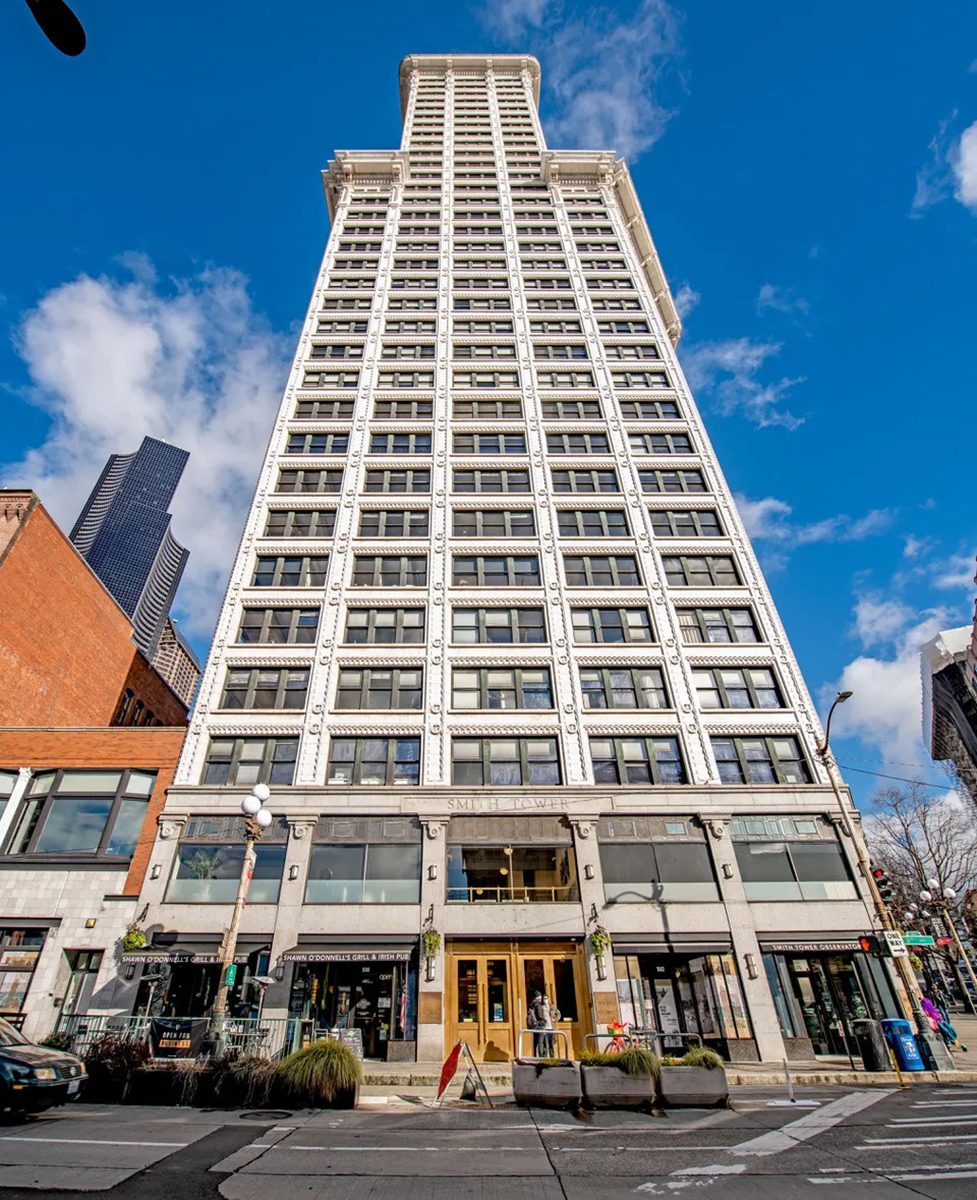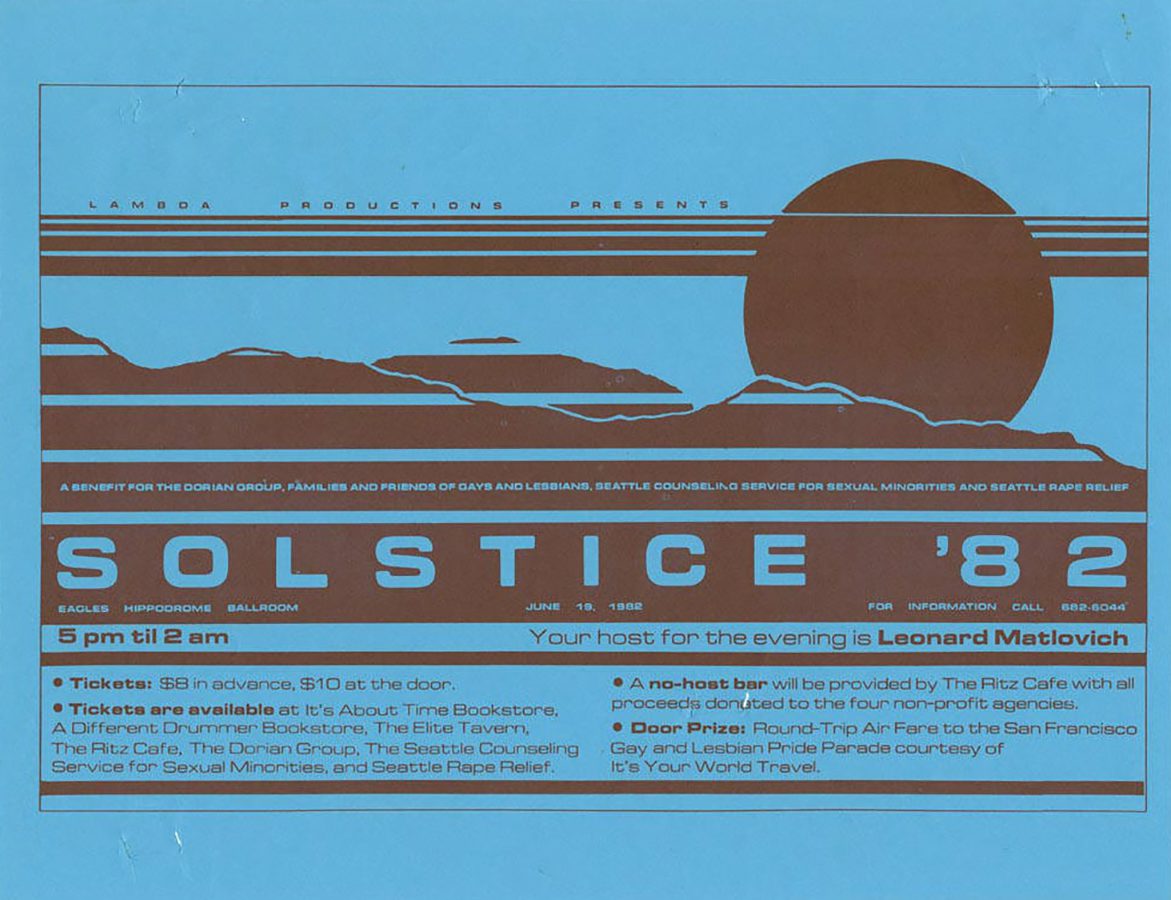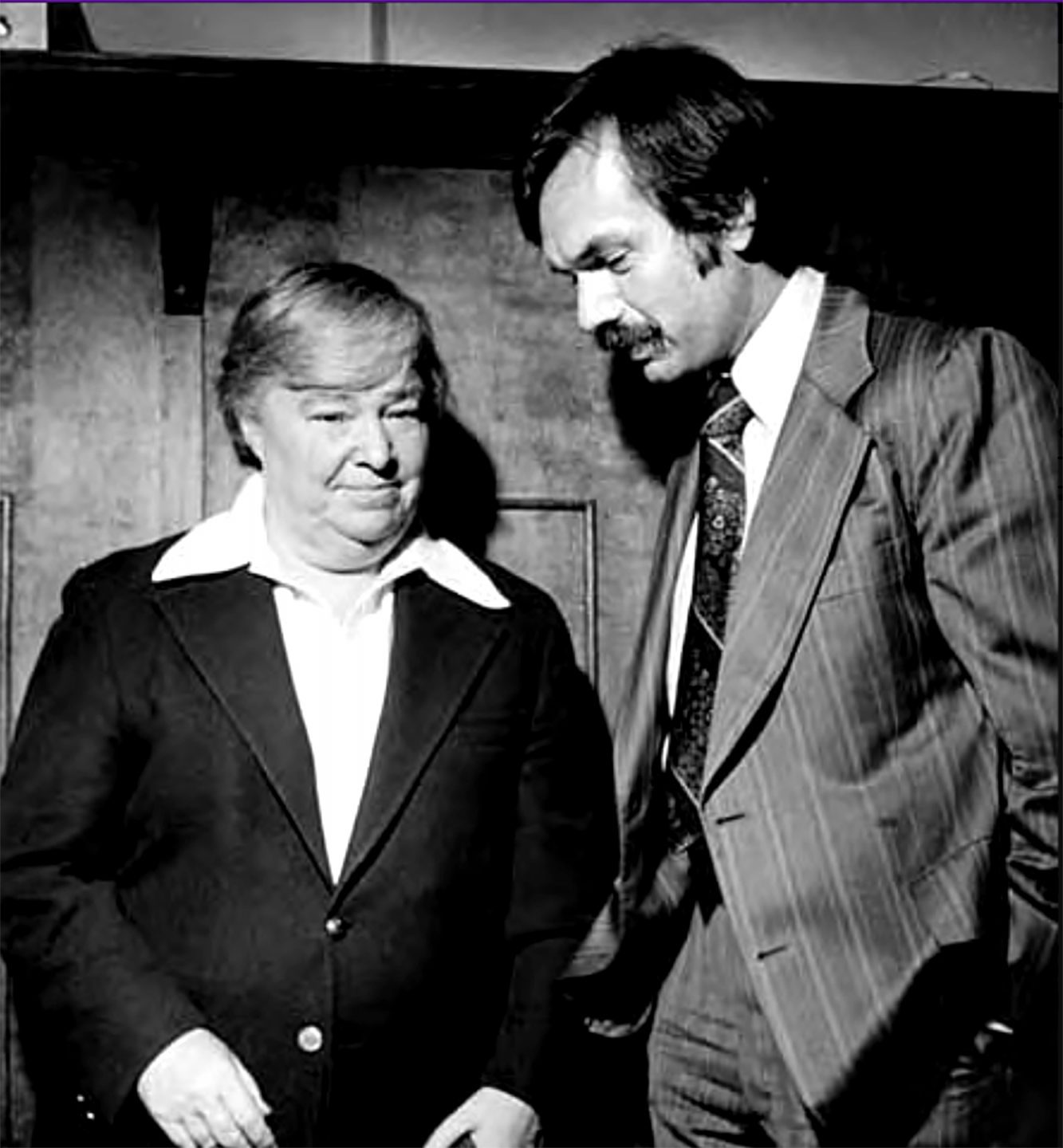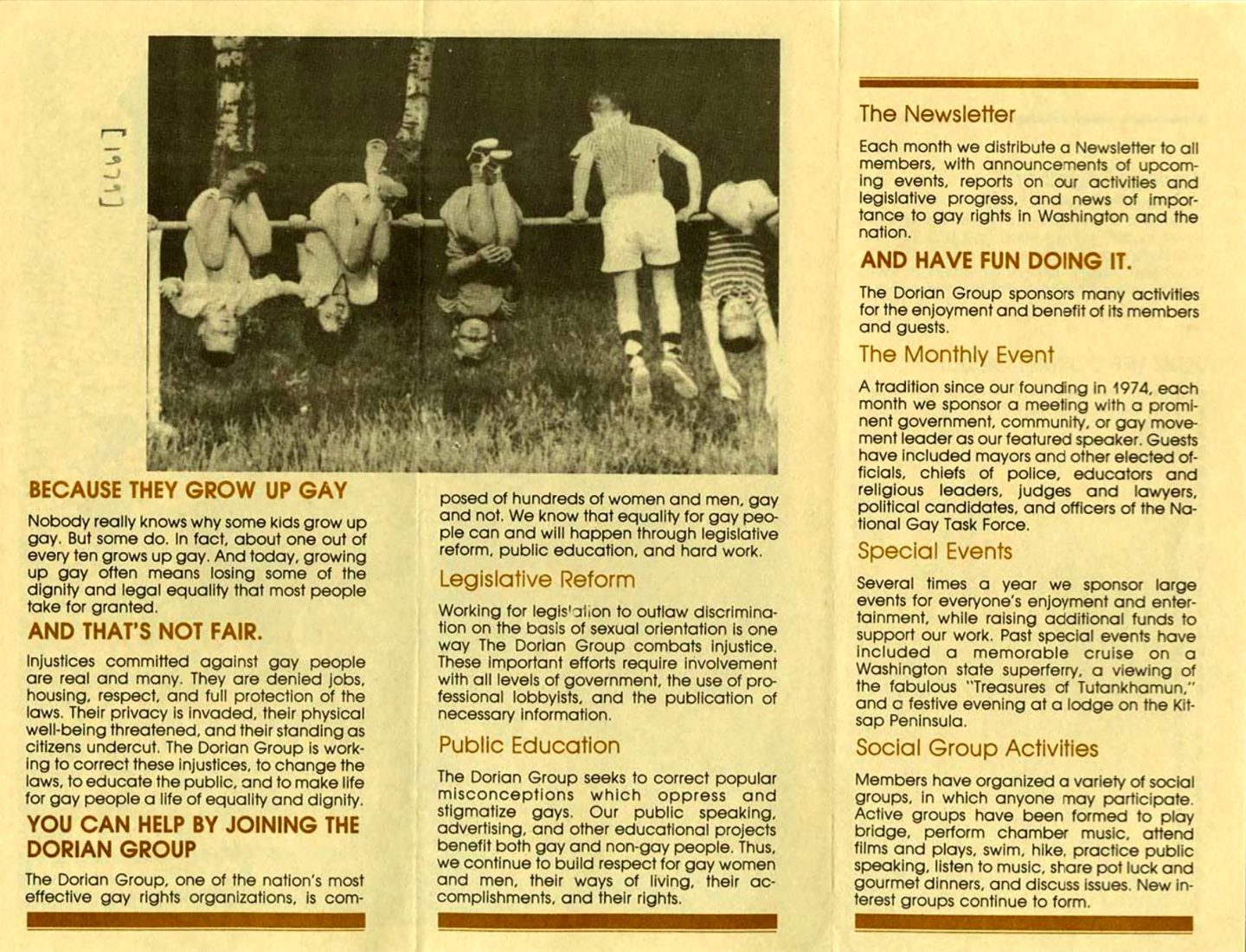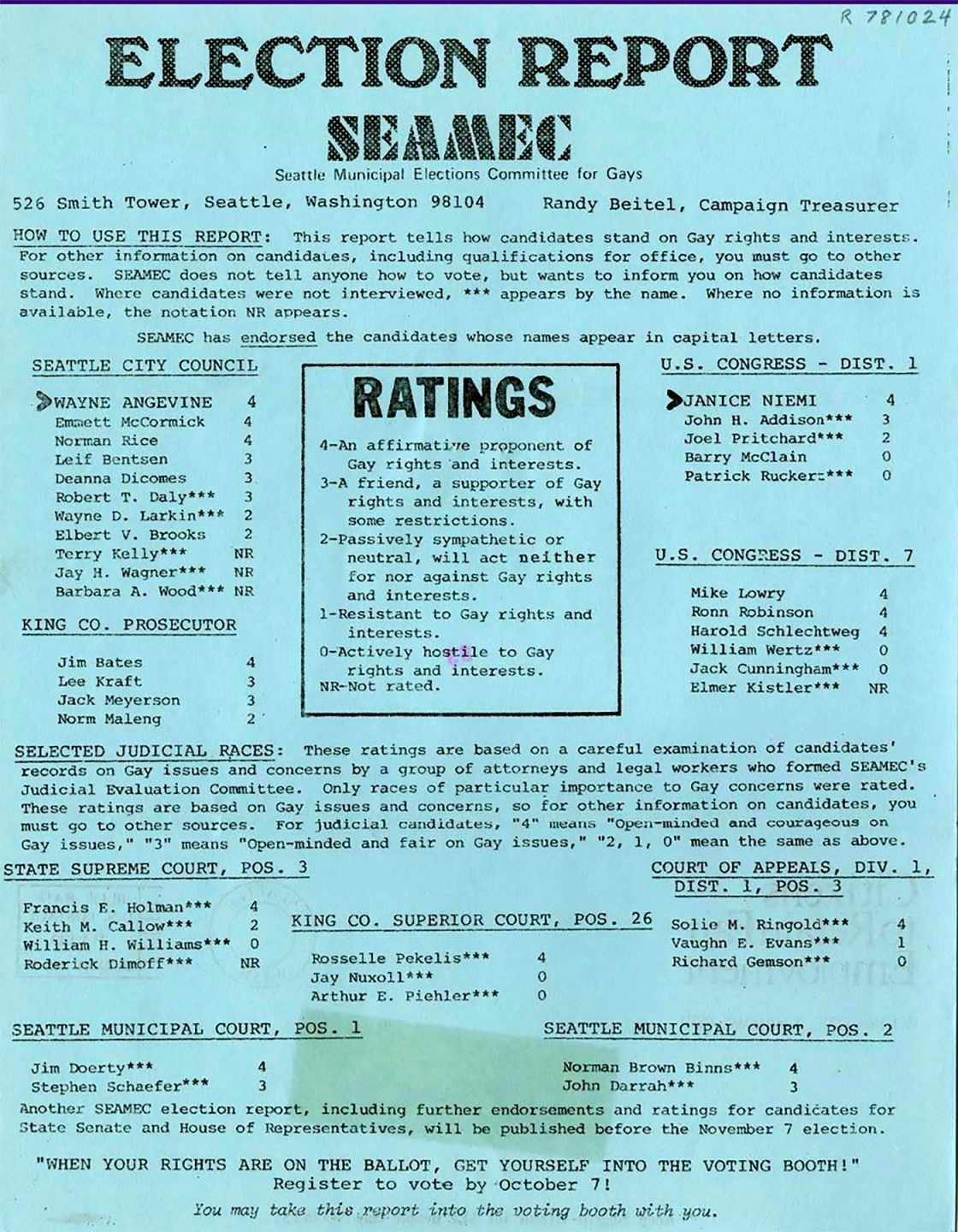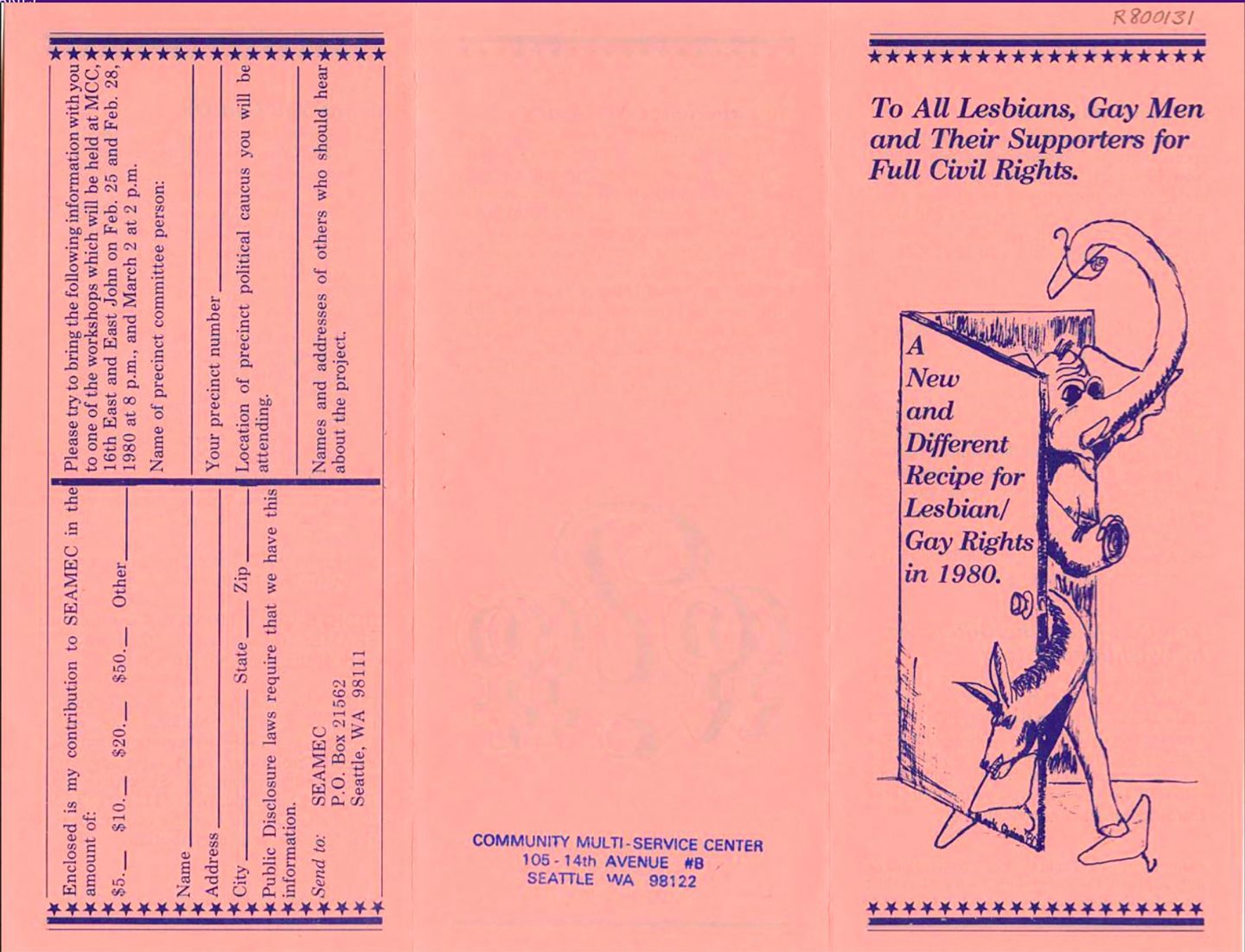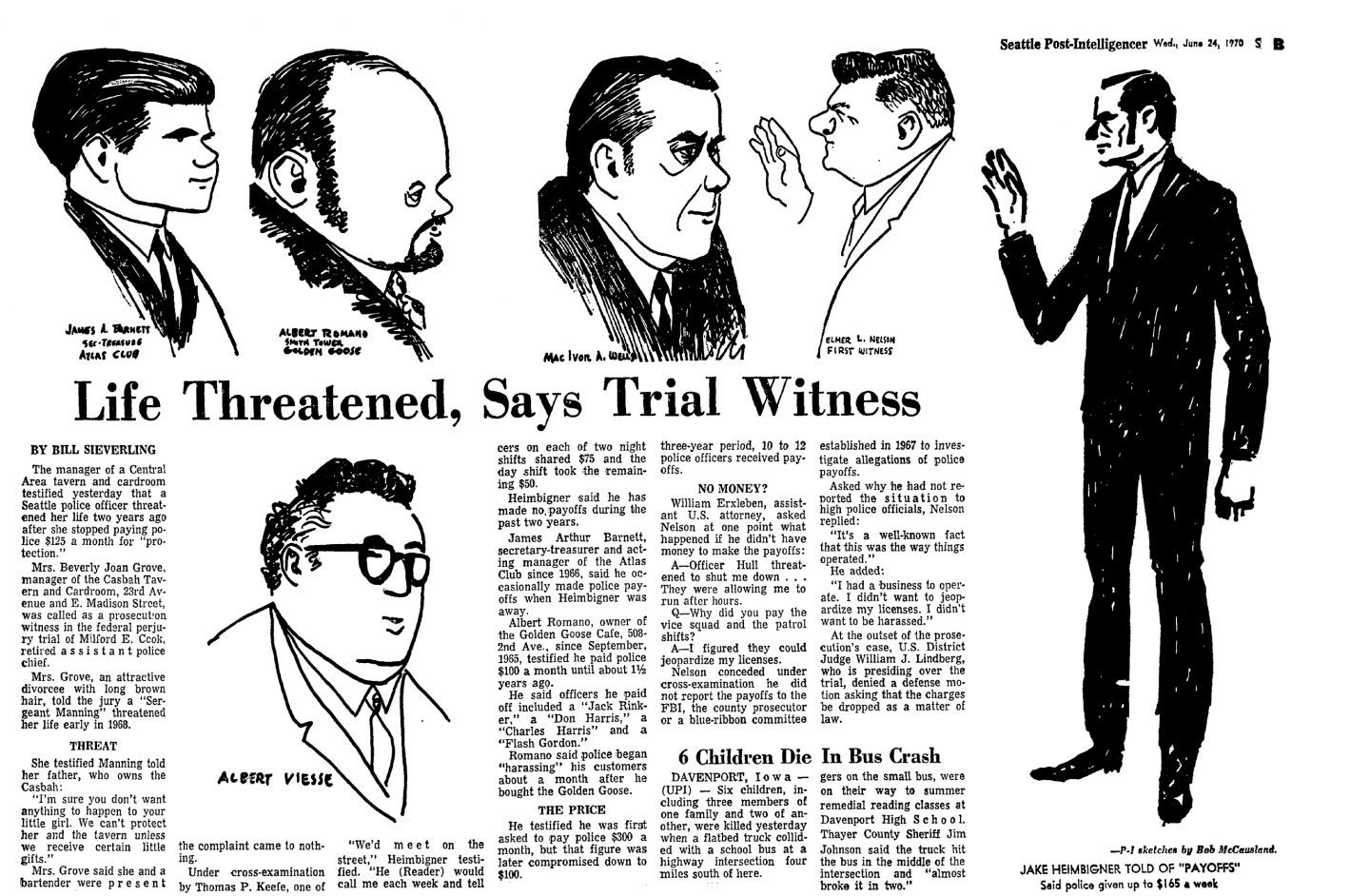-
Smith Tower
506 2nd Avenue
Smith Tower was built in 1914 and, for some 50 years, was the tallest building west of Chicago. Not long after it lost that title, the building played home to multiple LGBTQ+ groups and a dingy bar. That bar was the Submarine Room, located in the basement. A lesbian bar that drew customers from the broader LGBTQ+ community, the Submarine Room was reportedly “so dark you couldn’t see.” Then there was the Dorian Group. Not to be confused with the Dorian Society, the Dorian Group began in 1975 and mobilized mostly professional, white gay men and lesbians. The group wasn’t known as being critical of larger society, and this might have played into its visibility in City Hall. Within a couple years, it was dabbling in state politics, and threw its support behind a statewide nondiscrimination bill that would ensure fair housing and employment for “sexual minorities,” a term popular during the era.
Right around the time the Dorian Group was gaining political heft, in 1977, the Seattle Municipal Elections Committee was born. SEAMEC put its focus on registering LGBTQ+ people to vote, creating a system to rank political candidates on where they fell on community issues. In its first action, the committee registered some 1,700 new LGBTQ+ voters.
The tower also played another role in LGBTQ+ history, or at least one of its owners did. That was Ivar Haglund, who owned the building from 1976 to 1985. In 1978, Seattle Police officer David Estes began a political effort to strip local LGBTQ+ people of housing and employment protections. The effort became known as Initiative 13. Haglund donated money to fight the initiative. Perhaps his donations helped SEAMEC, the Dorian Group and others energize residents, because 63 percent of voters rejected the initiative.
Smith Tower still stands. At some point, Tower visitors could see a diorama of the closed Submarine Room, but it’s unclear if that remains. SEAMEC is no longer in the tower, but it continues to assess political candidates under the name Seattle Metropolitan Elections Committee.
Our next stop, the former site of the Mocambo Restaurant, is just around the corner at 203 Yesler.
